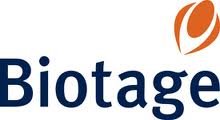New SLE and SPE Automation System from Biotage

Biotage has launched of the new Biotage Extrahera, an automated system for the processing of supported liquid extraction (SLE) and solid phase extraction (SPE) methods in both plate and column formats — making the system a flexible option for a wide variety of analytical laboratories.
Biotage Extrahera is a compact eight channel automation system that can handle 96 & 48 fixed well plate formats and 1 mL, 3 mL or 6 mL columns. The instrument has been designed for speed and flexibility and is capable of processing a complete 96-well plate SPE method in less than 30 minutes. The system comes pre-loaded with Biotage SPE and SLE methods for plates and columns, while new methods can be created in minutes; using the feature rich software, operators are able to just press “Start” and walk away.
By automating SPE or SLE methods the Biotage Extrahera removes workflow bottlenecks in the laboratory; the higher throughput lowers the cost per sample of analysis and enables skilled analysts to be redeployed to other, more demanding tasks, such as data analysis. Automation also ensures that samples are prepared identically every time, regardless of the sample matrix, improving accuracy and precision of results.
“Sample preparation can be a laborious, time consuming process — implementing Biotage Extrahera ensures that samples can be being generated to feed an MS system as fast as the extraction method permits and as fast as an end user can provide suitable samples for extraction” says Paul Roberts, Analytical Product Manager, Biotage.
Biotage Extrahera utilises a minimum of moving parts with easily accessible consumables and has been designed to minimize any potential cross contamination. Using positive pressure during processing provides more control and uniformity of flows across multiple columns and wells. The enclosed working area also ensures operator safety and reduces their exposure to solvents and hazardous compounds.
Related News
-
News Patients vs Pharma – who will the Inflation Reduction Act affect the most?
The Inflation Reduction Act brought in by the Biden administration in 2022 aims to give better and more equitable access to healthcare in the USA. However, pharma companies are now concerned about the other potential costs of such legislation. -
News CPHI Podcast Series: What does the changing US Pharma market mean for industry and patients alike?
In this week's episode of the CPHI Podcast Series Lucy Chard, Digital Editor for CPHI Online is joined by James Manser to discuss the political and market changes in the US pharma field. -
News CPHI Barcelona Annual Report illuminates industry trends for 2024
The CPHI Annual Survey comes into it’s 7th year to report on the predicted trends for 2024. Over 250 pharma executives were asked 35 questions, with their answers informing the industry landscape for the next year, spanning all major pharma marke... -
News Which 10 drugs are open to price negotiation with Medicare in the USA?
The Centres for Medicare & Medicaid Services, under the Biden administration in the USA, has released a list of the 10 drugs that will be open to price negotiations as part of the new legislation under the Inflation Reduction Act (IRA). -
News EU Medical Devices Regulation causes unintended disappearances of medical devices for children, doctors state
Doctor groups and associations have appealed to the EU to correct the EU Medical Devices Regulation law that may cause unintended shortages of essential drug and medical devices for children and rare disease patients. -
News 10 Major Drug Approvals So Far in 2023
Last year, 37 novel drugs were approved by the FDA, this was a high number for such a category, and covered many fields including oncology, demonstrating how promising further research is, and how it is only continuing to build. To date, there are alre... -
News Detecting Alzheimer's disease with a simple lateral flow test
A novel rapid diagnostic test for early-stage Alzheimer's disease has been developed using a biomarker binder from Aptamer Group along with technology from Neuro-Bio, the neurodegenerative disease experts. -
News CPHI Podcast Series: outsourcing and manufacturing trends
Listen to the CPHI Podcast Series this June to hear Gil Roth of the PBOA speak with Digital Editor Lucy Chard about the biggest trends and topics to watch in pharma outsourcing and manufacturing at the minute.
Position your company at the heart of the global Pharma industry with a CPHI Online membership
-
Your products and solutions visible to thousands of visitors within the largest Pharma marketplace
-
Generate high-quality, engaged leads for your business, all year round
-
Promote your business as the industry’s thought-leader by hosting your reports, brochures and videos within your profile
-
Your company’s profile boosted at all participating CPHI events
-
An easy-to-use platform with a detailed dashboard showing your leads and performance







